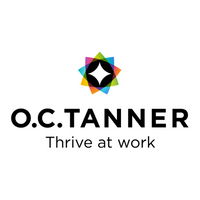Top ways to implement a recognition strategy that appeals to a multigenerational workforce
Four generations share the modern workspace, a mix that is bound to create friction and frustrations. According to the O.C. Tanner Institute (2021 Global Culture Report), 75% of managers say managing multi-generational teams is a challenge and 77% of employees say, “different work expectations are a challenge”.
While there is plenty written about the differences between generations and how to manage them, the same research indicates that, at a basic level, generations are more similar than not.
What do all people want?
Regardless of generation, it’s now increasingly important for employees that the culture of the company they’re part of fosters a sense of purpose, connection, and appreciation. Companies can achieve these through being intentional about their workplace culture, practicing modern leadership and integrating recognition into their everyday operations.
Recognition: start with the basics
There is a lot of variation in recognition programmes across companies. Therefore, in designing or rethinking their recognition strategy, leaders should seek to understand what their employees want from it. Since all generations value feeling appreciated and valued, paying attention to individual nuances leads to successful programmes. If a company has an active employee listening strategy in place, leaders can use it to learn what these preferences are and help managers better cater to their teams’ recognition needs.
Make recognition individual
When done right, recognition strategies aim for global goals and success while acknowledging the language of recognition is not universal. Activities should account for local cultural and generational preferences and needs too.
The most successful recognition experiences are crafted around the individual. The type, frequency, and method by which recognition is given should take into account generational preferences, such as those briefly described below with respect to achievement recognition.
Baby Boomers prefer to receive recognition in person, with the team present. For this group it’s important that the recognition received outlines the impact they made on their team and immediate environment.
Gen-X primarily look for purpose in their work. They also prefer in-person presentations with their immediate team and their managers should seek to make them feel they belong and that they are valued experts in their field.
Millennials value opportunity the most and thrive when their recognition follows challenges that helped them develop new skills. They prefer experiential rewards.
Gen-Z are the most passionate about purpose, opportunity, and wellbeing. Their recognition should outline how their work contributed to their company’s purpose and the impact they made on their customers. They prefer rewards that are experiential or symbolic.
When it comes to career anniversaries, all generations have a strong preference for celebrating in person, with their teams. Paying the same attention to individual preferences ensures that the anniversary of a Gen-Z employee will not look nor feel the same as the same anniversary of their Millennial colleague.
The role of modern leadership
All generations thrive under modern leaders, regardless of which generation the managers themselves are part of. Some of the ways in which these leaders engage their multigenerational teams include being clear about their processes and decisions, making them feel they belong, being mentors rather than just bosses, and engaging in honest dialogue with them. Moreover, modern leaders are the most effective at role-modelling appreciation behaviours and using personalised recognition to strengthen employees’ sense of belonging and connection to purpose.
Good culture means good business
Companies that are successful in building great cultures, have modern leaders and excellent recognition are 4x more likely to have grown in revenue and 3x less likely to have laid off employees in the previous year. When these conditions are met, employees also thrive. For instance, Gen-Z employees are 15x more likely to be engaged, 16x more likely to stay with their employer and 13x more likely to be Promoters (on the eNPS scale).
Other generations also benefit when they work in great cultures, have modern leaders and their recognition experience is excellent: they are 10x more likely to innovate, 12x more likely to stay and 13x more likely to be engaged.
Supplied by REBA Associate Member, O. C. Tanner
Giving teams the integrated tools they need when, where and how they need them.








